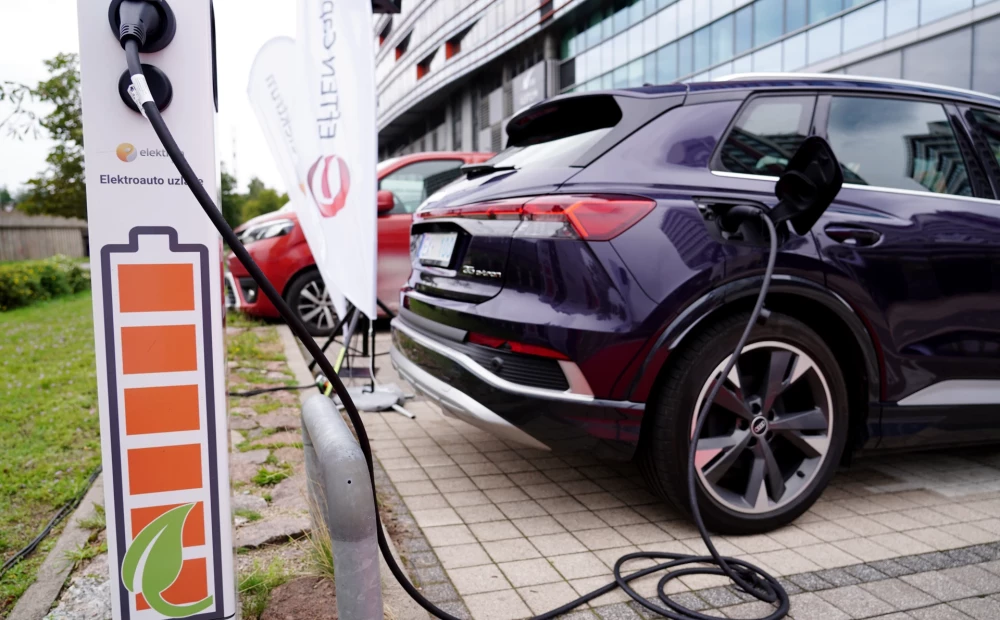Carmakers have invested billions to develop new battery electric vehicles (BEVs), with more than 30 million such vehicles expected to be on European roads by 2030.
Electric cars do not produce exhaust emissions, but the production of vehicles and batteries still produces carbon emissions.
So how environmentally friendly are BEVs and how do they compare to traditional internal combustion engine (ICE) cars that run on petrol or diesel?
What is the impact of the electric car manufacturing process on the environment?
Lifecycle emissions are emissions that occur during production, use and disposal, so everything from raw materials and battery power sources to the recycling and reuse of the vehicle at the end of its life must be considered for BEVs.
Extraction, purification, transportation and production of lithium-ion batteries is a very energy-intensive process, which means that the production stage of battery electric cars has higher emissions than ICE cars.
Although the manufacturing process of an internal combustion engine car may not be as intensive, it still has a significant carbon footprint.
Reuters reported earlier this year that Volkswagen and Toyota plan to become carbon neutral by 2050, while Hyundai Motor Group said Hyundai Motor and Kia were “accelerating efforts” to become carbon neutral.
By 2039, all new Mercedes-Benz vehicles across the chain will be carbon neutral, and General Motors (GM) plans to become carbon neutral by 2040.
In contrast, the Swedish company Polestar has set an ambitious goal of producing a zero-carbon car by 2030, identifying and eliminating all carbon emissions, from the extraction of raw materials to production to the treatment of end-of-life cars.
The difference between BEVs and ICEs in terms of carbon dioxide emissions can be significant when the car is first sold, but as long as ICEs are on the road, they continue to emit CO2, while electric cars produce no emissions apart from particulates from tires and for brakes.
According to research by European sustainability NGO Transport & Environment (T&E), the average EU electric car is almost three times better in terms of carbon emissions than an equivalent petrol or diesel car, and the gap continues to widen.
The benefits of BEVs will only increase as the grid becomes greener, but even a BEV driven in Poland with a Chinese-made battery still emits 37% less CO2 than gasoline.
On the other hand, an 83 percent reduction can be achieved with a Swedish-made electric car with a Swedish-made battery driven in Sweden. They also predict that electric cars purchased in 2030 will reduce CO2 emissions by a factor of four, thanks to the EU’s electricity grid increasingly relying on renewable energy sources.
But what about the battery?
The raw materials used in the production of batteries are one of the main factors that determine the price of BEVs, and therefore they are still more expensive than their ICE equivalents.
As battery technology improves, new alternatives to the standard lithium-ion chemistry will emerge. Possible alternatives to these raw materials are also being explored, for example the Chinese battery giant CATL is developing a new sodium ion battery.
BYD, the world’s largest manufacturer of electrified vehicles, recognizes the importance of reducing the use of rare minerals in battery technology, and its Blade Battery is produced without the use of cobalt.
At the same time, more could be done to help reduce the environmental impact of mining. Reinvesting profits into local communities to support education and training would provide opportunities that are too often unavailable to people in developing countries.
One of the important steps to reduce the life cycle emissions of electric vehicles is the recycling or reuse of batteries.
The battery regulation proposed by the European Commission is the world’s first sustainable battery law, which aims not only to ensure ethical extraction methods, but also to reduce the demand for extraction by recycling raw materials more efficiently.
In July, the EU Council adopted a new regulation setting out requirements for end-of-life batteries, including collection targets and obligations, material recovery targets and extended producer responsibility. This will significantly contribute to the development of the circular economy.
End-of-life batteries in BEVs may not be suitable for re-use in cars, but this presents a huge opportunity to reconfigure them for a “second life”, including electricity storage on the grid, thus reducing the overall carbon footprint of battery production.
Another solution is to reuse existing batteries, as the scarcity of raw materials encourages investment in battery recycling. However, it is not yet known how sustainable it will be from an environmental and economic point of view, as the recycling process also has a large carbon footprint.
There is strong evidence that BEVs produce less carbon dioxide emissions during operation than ICEs and are therefore more environmentally friendly.
As battery technology and manufacturing techniques improve, battery life will continue to improve, thus extending the life of electric cars as well.
2023-09-24 02:55:00
#electric #cars #environmentally #friendly #praised

